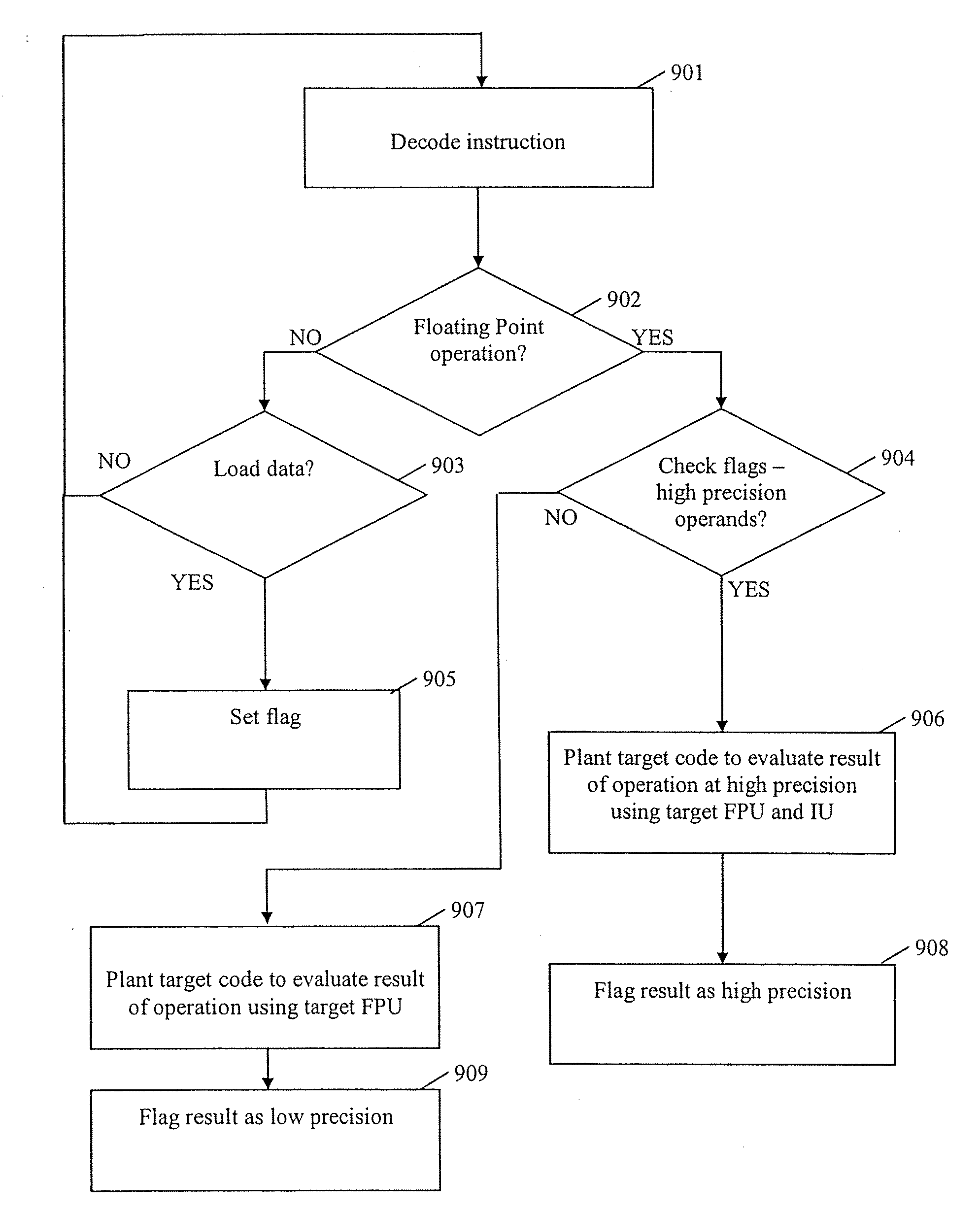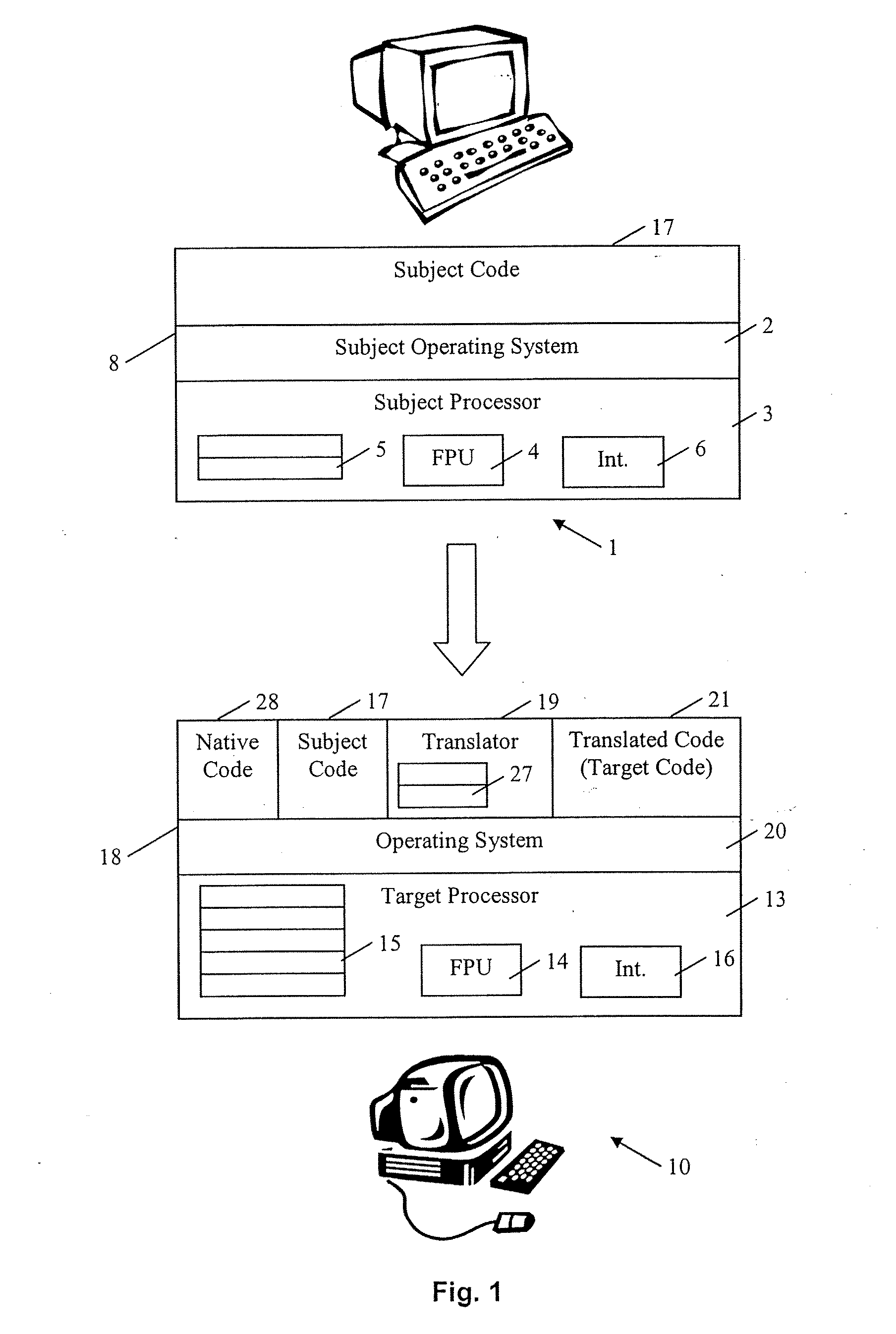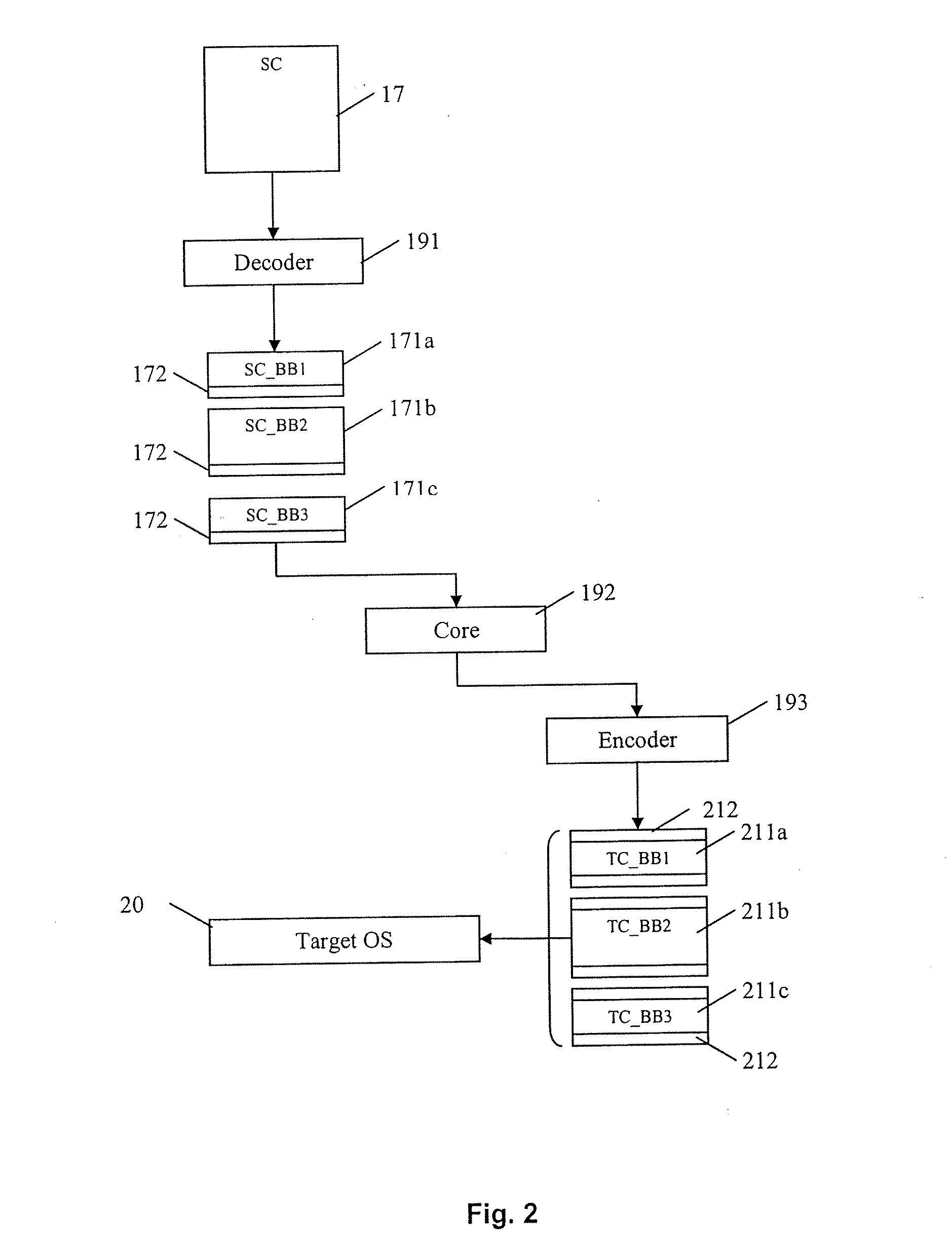Handling floating point operations
a floating point operation and floating point notation technology, applied in the field of computer systems, can solve the problems of not being able to evolve in performance or market reach, unable to handle numerical values expressed in floating point notation, and often being executable by one type of processor
- Summary
- Abstract
- Description
- Claims
- Application Information
AI Technical Summary
Benefits of technology
Problems solved by technology
Method used
Image
Examples
Embodiment Construction
[0033]The following description is provided to enable a person skilled in the art to make and use the invention and sets forth the best modes contemplated by the inventors of carrying out their invention. Various modifications, however, will remain readily apparent to those skilled in the art, since the general principles of the present invention have been defined herein specifically to provide an improved program code conversion method and apparatus.
[0034]FIG. 1 gives an overview of a system and environment where the example embodiments of the present invention may find application, in order to introduce the components, modules and units that will be discussed in more detail below. Referring to FIG. 1, a subject program 17 is intended to execute on a subject computing platform I having at least one subject processor 3. However, a target computing platform 10 is instead used to execute the subject program 17, through a translator unit 19 which performs program code conversion. The t...
PUM
 Login to View More
Login to View More Abstract
Description
Claims
Application Information
 Login to View More
Login to View More - R&D
- Intellectual Property
- Life Sciences
- Materials
- Tech Scout
- Unparalleled Data Quality
- Higher Quality Content
- 60% Fewer Hallucinations
Browse by: Latest US Patents, China's latest patents, Technical Efficacy Thesaurus, Application Domain, Technology Topic, Popular Technical Reports.
© 2025 PatSnap. All rights reserved.Legal|Privacy policy|Modern Slavery Act Transparency Statement|Sitemap|About US| Contact US: help@patsnap.com



